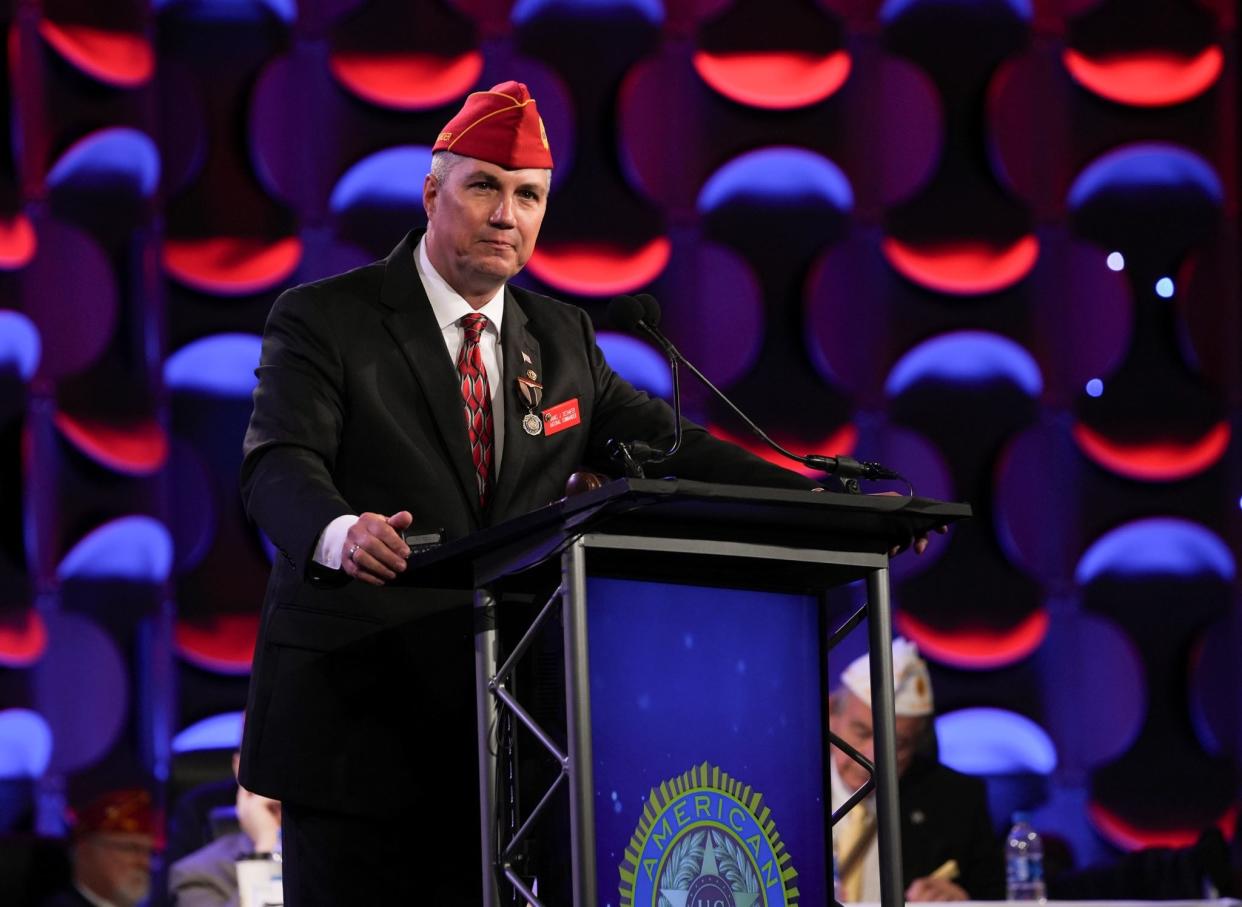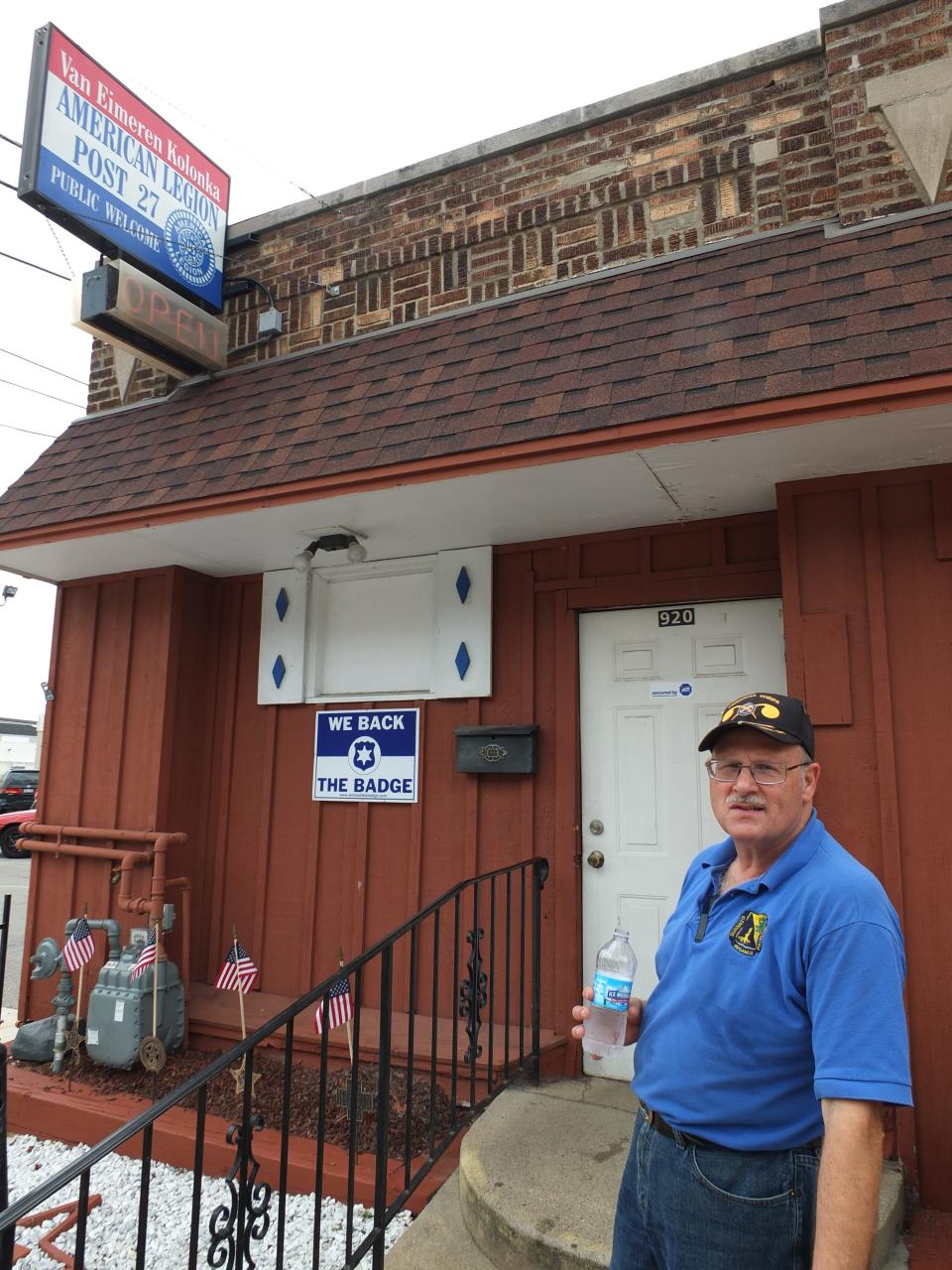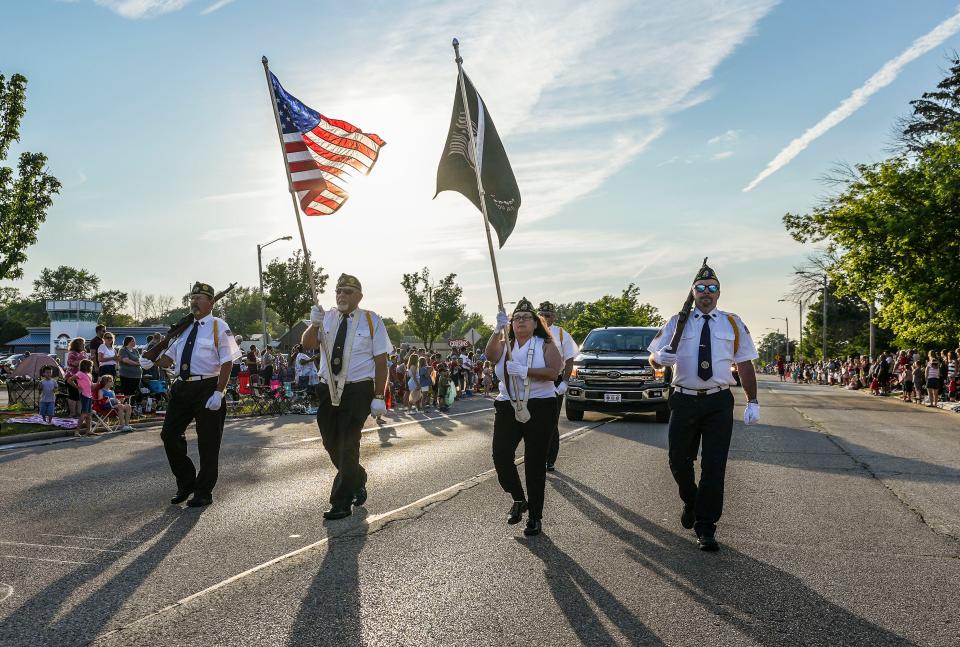Meet the Wisconsin Navy veteran elected as national commander for the American Legion

Merrill, Wisconsin, native Daniel J. Seehafer said when he first got involved with the American Legion, he didn’t fully grasp what the veteran nonprofit was all about.
Now, he’s leading the Legion after being elected Aug. 31 as the national commander during the organization’s 104th National Convention in Charlotte, North Carolina.
So, what is the American Legion's mission?
“This organization is about changing lives and saving lives,” he said, highlighting the Legion’s “Be the One” initiative to prevent veteran suicide.
While meeting with department heads and up-and-coming commanders recently in Indianapolis, Seehafer had a moving encounter.
“I had somebody say, ‘You know something, commander, I was going to throw myself in front of a bus because I had no purpose; I didn’t think anybody cared. I had nothing, until I joined the American Legion, and it changed my life,’” Seehafer said.
That man is now chair of the membership committee for his local Legion.
“If that doesn’t say something, that’s what we are about and that’s the message I want to bring to the world,” Seehafer said.
What experience does Seehafer bring to the position?
Seehafer, who lives in Beaver Dam, is an ordained minister and served as a military chaplain for the U.S. Navy and Navy Reserve.
A member of American Legion Post 157 in Horicon, Seehafer was formerly the national chaplain and commander of the Legion's Department of Wisconsin.
Seehafer said his experience as a minister absolutely is a benefit to his new position, calling his approach “servant leadership.”
“That’s what (veterans) do, we serve,” he said. “As that uniform is put away now, it’s the next step and that dedication, that striving to continue to serve.”
Seehafer said he made the decision to become a pastor in grade school.
“When there was a sermon going on, I was already thinking how I could write that or communicate that and that was in seventh grade,” he said. “There was definitely, we call it in the church world, a calling.”
Why did Seehafer join the armed forces?
For a time, Seehafer considered joining the National Guard.
“I wanted to, but it wasn’t the right time,” he said.
After completing his bachelor’s degree in pastoral ministry at Concordia University, Seehafer attended Concordia Theological Seminary in Fort Wayne, Indiana.
In 1997, he was installed as the assistant pastor for St. Stephen Lutheran Church in Horicon, where he continues to serve as administrative pastor of the church and school.
It was at seminary where Seehafer met professors who were involved in the chaplaincy program.
“It just intrigued me,” he said. “I always wanted to serve, and I’m like, you know, I could serve as a pastor and serve my country. I could be a chaplain.”
What will Seehafer do to increase awareness and membership of the American Legion?
It was a church member who asked Seehafer to join the American Legion in Horicon. He rose through the ranks and during his term as commander, Post 157 was recognized for all-time high membership, according to a news release about Seehafer’s election.
Today, many Legion posts struggle to attract younger veterans. In the Milwaukee area, posts in Cudahy and St. Francis were closed many years ago, according to South Milwaukee Post 27 Commander Ray Grabowski.

The South Milwaukee Van Eimeren-Kolonka American Legion Post 27 building was put up for sale earlier this year due, in part, to an aging membership and “financial ills,” according to Grabowski.
When posts close, history such as photos and records are often lost to landfills.
“It’s a sad thing,” Seehafer said. “Sometimes some communities change, but the key is to preserve that, not just put it in a box and have it in somebody’s basement or throw it away. So, we can preserve that and that’s why we have the headquarters in Portage (Wisconsin) and that would be preserved in our museum.”
Instead of Legion members just reading about their history and reminiscing, Seehafer hopes to motivate more to take action.
“I would love to resurrect or to motivate some leaders and to say, enough is enough, we want to have a powerful post, a powerful county (district) in Milwaukee,” he said. “That would be my dream.”
What is the main problem with getting veterans involved?
“I just think people are so busy these days,” Seehafer said.
Many posts facing difficulty attracting membership are focusing more on family events, he said. They’re reaching out to younger veteran families while realizing it’s common today that both mom and dad work.
“It’s not just dad going to the Legion meeting, it could be mom going to the Legion meeting,” Seehafer said. “It’s not a man’s world, it’s a veteran’s world.”
However, he said each Legion post is different across the country and some are doing very well, comparing it to a popular fast-food chain.
“If one McDonald’s is not good, well, do you say that all McDonald’s are not good,” he questioned.
Seehafer said the Legion and many of its members today are “full of energy, having that fire in the belly again, and saying hey, we’re continuing to serve America; serve each other. That’s our key.”
Sometimes businesses can’t thrive in certain areas and the same can happen with nonprofits, he said. However, it’s possible to regroup if people are interested and involved.
“Be that cardholder,” Seehafer said as a message to all veterans. “Join us. There is a post out there for every veteran that they can call home.”
Why should a veteran join the American Legion?

“(It’s) an organization of so much good,” Seehafer said. “We are always at the forefront.”
He said the Legion was a champion of the G.I. Bill, a law that provided various benefits for returning World War II veterans, and the PACT Act, “a new law that expands VA health care and benefits for veterans exposed to burn pits, Agent Orange and other toxic substances,” according to VA.gov.
“We want legislation to be on the side of our fellow veterans,” he said. “We’re always protectors, that’s what we are. We always watch out for our brothers and sisters.”
For more information on the American Legion or to find your local post, visit Legion.org.
Could the American Legion’s national meeting return to Milwaukee anytime soon?
“I would say five years,” Seehafer said, adding the locations are on a rotating schedule. “We were just there (in 2022).”
Contact Erik S. Hanley at erik.hanley@jrn.com. Like his Facebook page, The Redheadliner, and follow him on Twitter @Redheadliner.
More: New proposal would turn former Kearney and Trecker building in West Allis into event space
More: Waukesha's lake water is coming. What to know about potential problems and solutions.
Our subscribers make this reporting possible. Please consider supporting local journalism by subscribing to the Journal Sentinel at jsonline.com/deal.
DOWNLOAD THE APP: Get the latest news, sports and more
This article originally appeared on Milwaukee Journal Sentinel: Meet the Wisconsin man elected to lead the American Legion

